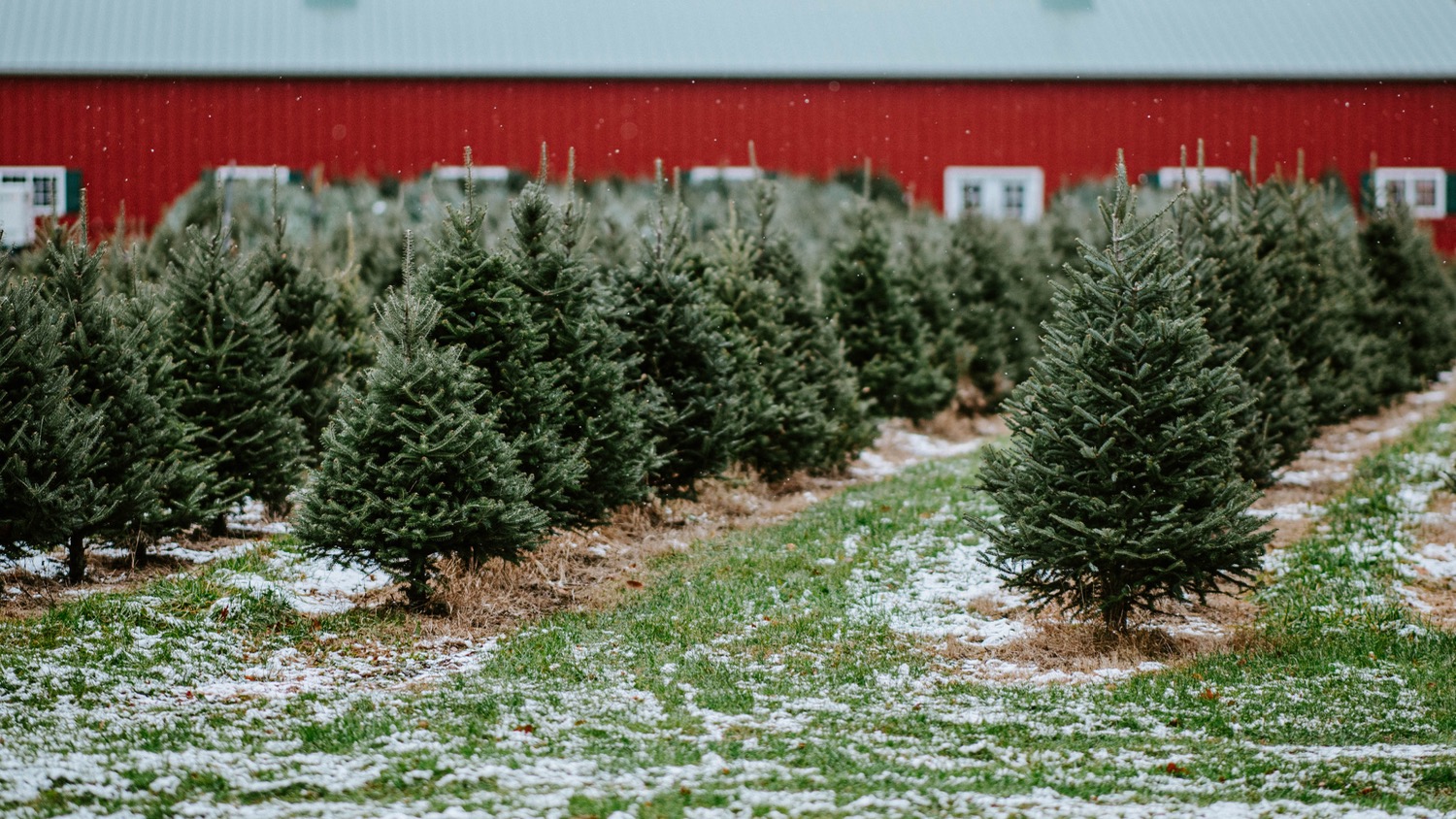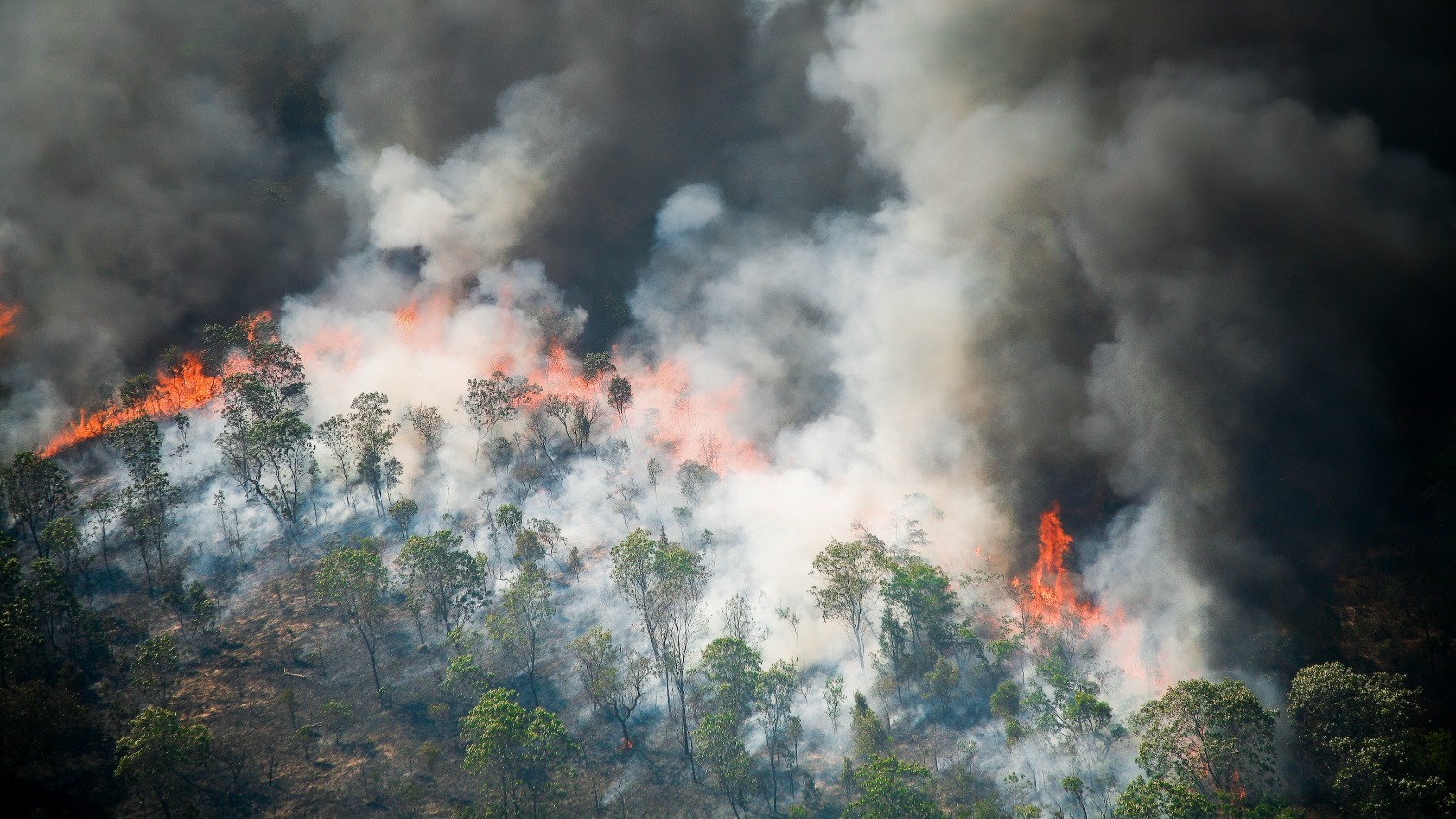Why Christmas Trees Smell Good
NC State expert Justin Whitehill explains the science behind why pine, fir and spruce trees emit aromas.

If you’ve ever purchased and displayed a real Christmas tree during the holiday season, you’ve likely wondered why it smells so good.
Unlike their artificial counterparts, real Christmas trees produce a sap-like substance called oleoresin to defend against certain pests and pathogens. This substance is especially prevalent on the buds of trees.
Oleoresin has a low boiling point and contains chemical compounds called terpenes. When conifers are displayed indoors, the ambient temperature heats the oleoresin, causing the terpenes to evaporate.
As terpenes evaporate, they emit aromas, according to Justin Whitehill, an assistant professor of forestry and environmental resources and the director of the Christmas Tree Genetics Program at NC State.
Whitehill said there are several hundred terpenes found in conifers. That includes pinene, which is one of the most abundant and produces the fresh, woodsy aroma that many people associate with Christmas.
Some of the other common terpenes released by conifers includes limonene, which produces a citrusy aroma; myrcene, which produces the aroma of thyme; camphene, which produces the aroma of camphor; and phellandrene, which produces a minty aroma.
The aroma of a Christmas tree ultimately depends on what species it belongs to as both the type and amount of terpenes varies from species to species, according to Whitehill.
“Trees are sort of like humans in that they’re different from each other at the individual level,” Whitehill said. “Some species can have lower or higher levels of certain terpenes than others.”
In addition to terpenes, some conifers also contain bornyl acetate, according to Whitehill. This non-terpene compound contributes to the woodsy aroma commonly associated with pine, fir and spruce trees.
Whitehill and other researchers in the Christmas Tree Genetics Program are currently investigating the aroma profiles of Fraser fir trees in an effort to breed trees with heightened levels of certain terpenes.
Fraser fir represents over 90% of all Christmas trees grown and sold across North Carolina, with some 850 mountain growers producing more than 50 million trees annually on approximately 38,000 acres.
Whitehill and the team are surveying consumers to gauge what aromas they prefer in Fraser firs. Once completed, the team hopes to identify trees with the terpenes responsible for the preferred aromas and then cross-breed them with genetically-similar trees to amplify the aromas.
“Fraser fir has one of the most appealing aromas to consumers,” Whitehill said. “We want to find individuals that have stronger aromas and then maybe offer them to consumers as features in the future.”
Additionally, Whitehill and the team hope to use their work to address the damage caused to North Carolina’s Fraser fir crops from pests, especially deer and other mammals that browse on the trees during the winter.
The team is currently investigating how Fraser firs that contain certain types of terpenes affect pests. “We’re especially interested in limonene,” Whitehill said. “Some preliminary evidence suggests that the citrusy aroma it produces can potentially act as a deterrent to deer.”
Whitehill added that the research ultimately aims to provide North Carolina’s Christmas tree growers with seedlings that have these advantageous traits, a process that will take years to accomplish due to the lengthy breeding cycle and slow growth rate of conifers.


